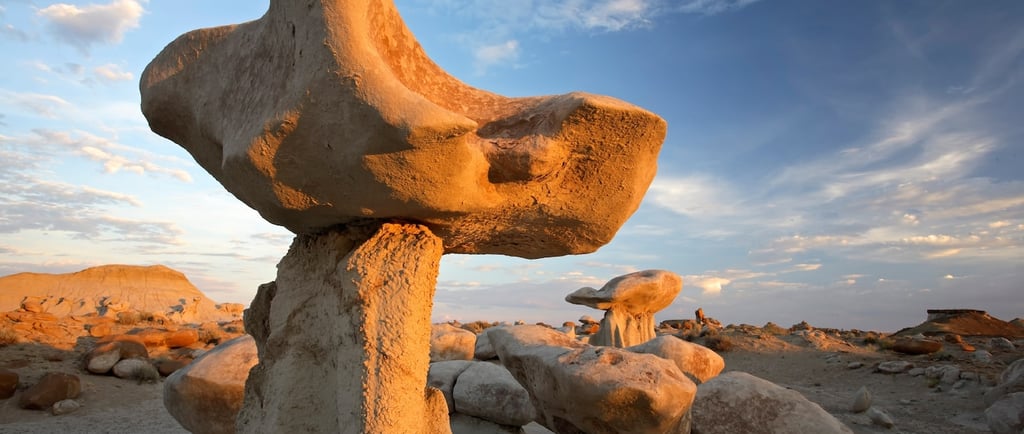🌬️Nature’s Secret Sculptor 🐭🪨 The Wind that Gnaws Rocks Like a Hungry Mouse
This story links directly to the Chapter "The Work of Air"🌬️ from the Geography Album. In the chapter The Work of Air we explore how air and its movements shape the world around us. From understanding how winds arise from high and low-pressure zones to uncovering the secrets of global wind systems. children delve into the dance of the elements. One fascinating phenomenon is WIND EROSION, where the wind acts as a natural sculptor. Just as water carves rivers, the wind hurls grains of sand against rock surfaces, gradually shaping them over time into unique formations. ✨ This story invites children to imagine the wind as an artist with infinite patience and to investigate examples of wind-sculpted wonders like the White Desert in Egypt or Monument Valley in the USA. 🌍
GEOGRAPHY STORIES
1/17/20252 min read


We’ve talked a lot about the work of air—it can blow, howl, and carry clouds across the sky. But there’s something else it can do that we haven’t talked about yet. Can you guess what? The wind can carve rocks! 🪨✨
Imagine the wind as a sculptor, hammering away at a giant block of rock. Instead of a hammer and chisel, it uses unexpected tool to carve —sand! Have you ever been to the beach on a windy day and felt tiny pieces of sand sting your bare legs? Ouch! Well, the wind does the same thing to rocks, but for thousands and thousands of years. It’s as if the wind said, ‘Hmm, I think I’ll turn this boring rock into something amazing!’ 🎨🌬️
But how does the wind actually do it? The secret is in the sand it carries. As the wind whooshes past, it picks up tiny grains of sand and flings them at bigger rocks. Imagine each grain of sand acting like a tiny chisel, slowly scraping away at the surface of the stone. One little piece of sand doesn’t seem like much, does it? But over time—thousands, or even millions of years—the wind can completely transform the rock. It’s like a giant art project that never stops!
Look closely at this 🖼️ Chart 11 (old) Chart 11 Chart12 What do you see? A rock that looks like a mushroom? Or maybe one that looks like a castle? 🏰 Some people even say they can see faces or animals carved by the wind. The wind might be patient, but it sure knows how to be creative!
🌀The ancient Greeks believed that the wind had a keeper, named Aeolus. He was said to be able to tame the winds or let them loose to run wild. Over time, people started calling these processes of wind carving the Earth ‘Aeolian processes,’ in honor of Aeolus. They are also nicknamed. "Mushroom Rocks" you can guess why. So every time you see a rock with strange shapes, you can imagine that Aeolus gave the wind permission to create something extraordinary. Look at this images I found - WHITE DESERT, EGYPT this is a landscape of chalk rock sculptures shaped into surreal forms. 🌌, WADI AL-HITAN (WHALE VALLEY), EGYPT Fossilized whale skeletons sit in a desert shaped by wind and sand. 🐋 , Mushroom Rock State Park KANSAS, US Rocks shaped just like mushrooms—nature’s very own art gallery! 🍄
🌟 I Wonder… Are there other places where the wind has created these sculptures? What other shapes the wind can carve? A dragon? A giant flower? 🐉🌺 Next time you see rocks, look closely—maybe the wind has already started its masterpiece!
Water can also carve rocks ... but this is a story for another day!
For this presentation I will the Chart 11 Chart 12 and pictures of wind-eroded rock formations from different places around the Earth.
With Montessori joy,
Vanina 😊

